
Sigma 28-45mm F1.8 DG DN | ART Review
Sigma’s 18-35mm F1.8 that was released nearly ten years ago became a cult favorite, particularly with the video crowd. Even full frame users often used it to help mitigate crop factors and because of the flexibility of having a zoom range AND a fast maximum aperture. Sigma followed that up with a similar full frame lens – the Sigma 24-35mm F2 – but that lens never seemed to capture the same kind of attention (perhaps due to its large size and abbreviated zoom range). But Sigma is back for the mirrorless era with a unique new offering that surely hopes to recapture the success of the 18-35mm. This is a full frame lens, but Sigma has tweaked the formula to allow for a slightly larger zoom and a little brighter a maximum aperture. We now have the 28-45mm F1.8 DG DN | ART lens…but does it have the magic of the 18-35mm? We’ll explore that question in either my video review below or in the text review that follows.
Follow Me @ YouTube | Patreon | Instagram | Facebook | DA Merchandise | Flickr | 500px | X
Thanks to Sigma Canada (Gentec) for sending me a review loaner of this lens. As always, this is a completely independent review. *The tests and most of the photos that I share as a part of my review cycle have been done with the Sony a7RV along with the Sony Alpha 1 that serve as my benchmark cameras for Sony lenses.
__________________________________________________________________________________________________
Some of the key selling features of the 28-45 DN include:
- World’s first F1.8 full frame zoom
- Prime-like optical performance
- Full range of video features
- Multiple custom buttons
- Aperture ring with declick and iris lock options
- Internally zooming design
- Thorough weather sealing.
Sigma revealed the development of this lens to me a while back, and my immediate thought when I heard the specifications was, “a full frame version of the 18-35mm!”. I saw their marketing materials about a month later, and that was exactly how they are marketing it. The numbers aren’t exact, but since the 18-35mm was an APS-C lens, if you apply a 1.5x crop factor (the most common APS-C crop factor) to that focal length, you get 27-52.5mm. So obviously the zoom range is a little more constrained on the full frame version, though definitely a bigger zoom ratio than the 24-35mm. Sigma cheated a bit on the wide end (-4mm) to allow more on the telephoto end (+10mm) and to avoid making the lens even larger. And that size factor is going to be, in my mind, the biggest potential deterrent. This is a BIG lens – over 153mm in length and weighing 950g – 33mm longer and 140g heavier than the 18-35mm. That’s not terrible in absolute terms (considering this is a full frame lens), but it does mean that this will be slightly harder lens to gimbal.

The whole “bag of primes” in one lens applies here, though I will practically point out that the Samyang 24mm F1.8 (230g), 35mm F1.8 (210g), 45mm F1.8 (162g) weigh a combined 602g. You could throw in the 75mm F1.8 (230g) and still undercut the weight of the 28-45mm by 150g! That’s not to suggest that those lenses are of the same quality as the Sigma or that having 3-4 prime lenses are as convenient for video making, but the size and weight will be probably the single greatest deterrent for some potential buyers. The better argument here is the image quality and overall performance, which is nothing short of exceptional.

Sigma has a well deserved reputation for producing sharp lenses, but every now and then they make something exceptional – something that stands out from the ordinary lenses that I review from them and is optically special. The 28-45 DN is one of those. Here’s why…
Build and Handling
Sigma’s build standards are continually evolving, and they have been very proactive about adding new features and improvements. Many of those feature improvements have been designed around video capture, which obviously serves this new lens well. The 18-35mm was well regarded, but the truth of the matter is that the only “feature” it had was an AF/MF switch. It didn’t have weather sealing (neither did the 24-35mm F2), and it didn’t have any kind of lens-based stabilization. The latter is still true, but the difference now is that almost all of the Sony full frame mirrorless cameras have camera based stabilization, as do a number of the L-mount cameras this lens is also compatible with. Outside of that, however, the 28-45 DN has basically all of the features currently available on modern lenses.

That starts with the aperture ring (something relatively new for zoom lenses, period). The aperture ring works great, giving you precise control at 1/3rd stops when in clicked mode, and gliding smoothly through the whole aperture range when declicked.

On the lower left side of the lens is the Click/Declick switch which allows you to choose between those two options.

On the right side of the lens is the iris lock. The iris lock will allow you to either lock into or out of the aperture ring. For those that want to use the aperture ring and not inadvertently switch into camera based aperture control, the lock can be engaged while you are in the aperture ring and keep you there. If you’re not an aperture ring person you can switch the lens into the A position and control it from within the camera. Engaging the iris lock while in A assures that you won’t inadvertently bump into manual aperture control.

The left side of the lens also has an AF/MF switch (always appreciated!), and in a slight redesign for Sigma, the two custom/function buttons are moved away from the AF/MF switch to a further section of the barrel that just the two of them occupy. One is on the left side for the traditional horizontal use of the camera.

There’s a second function button on the top of the lens for access when shooting in a vertical position.

The function of those buttons (they are redundant, not two separate functions) can be set from within the camera.
This is an internally zooming lens, so there is no need for a zoom lock. Internally zooming lenses tend to be larger than externally zooming lenses for obvious reasons, but there are a number of key tradeoffs for that extra size.
- The lens length remains constant, making it easier to use on a gimbal (the weight balance doesn’t change)
- There is no risk of zoom creep, as there is nothing external to be affected by gravity.
- The zoom action is smoother and more precise
- There is less risk of getting dust or moisture in the lens because nothing is going in and out.
- The handling is better

The zoom ring is the closer of the two rings, with the manual focus ring further out. The manual focus ring is well executed, with wide ribbing and good damping. It makes for a good focus emulation, though as with all mirrorless autofocusing lenses this is focus by wire. Input to the focus ring is routed through the focus motor, and there are no hard stops at minimum focus or infinity.

The overall look of the lens is very much modern Sigma, with a lot of vertical lines and a few different textures.

This flows into the lens hood, which has a lock, a rubberized section for soft touch and a ribbed section for more grip when mounting or removing. Sigma’s lens hoods are nicer than just about any other brand. A padded nylon case is also included.

While I haven’t seen a cutout diagram of the weather sealing points, I do know that Sigma touts a professional grade of weather sealing on it. There is a gasket at the lens mount, a coating on the front element, and internal seals throughout the lens. The internal zoom and focus design further helps with this.

The basic dimensions of the lens are 87.8mm (3.5″) in diameter and 153.4 (6″) in length. It weighs in at 950g (33.5oz) and has an 82mm front filter thread.

The aperture iris has 11 blades, which helps keep the aperture iris shape circular even with the lens stopped down.

The minimum focus distance of the lens is 30cm (11.9″), and the maximum magnification figure is achieved at 45mm and is a very useful 0.25x (1:4).

This combined with that F1.8 aperture allows for very nicely blurred backgrounds, and up close performance is quite good, though a little softer than if you back up another foot.

Because I review a lot of Sigma lenses, there’s a lot that is familiar here, which makes it easy to take their excellence in design for granted. Sigma is packing as many features into their top lenses as anyone out there, and that’s fantastic in a lens that is equally good for both video and stills. This is a big lens, but it’s also doing something no other full frame zoom has done before, so I feel like we can make some allowances here. And, at a price of $1349 USD ($1899 here in Canada), it is not exorbitantly expensive.
Autofocus and Video
This is another area where Sigma has made some key strides. Their initial offerings on Sony (and L-mount) featured STM focus motors, but Sigma has since released their more powerful, smoother HLA focus motor (High speed Linear Actuator). The HLA motor has much more torque/thrust than lenses equipped with the stepping motor, which is very important when you are talking about a lens with larger, heavier optical glass like this one. The increased thrust of the focus motor means that it is capable of moving much faster and is thus much more reactive. Real world focus changes are essentially instantaneous, making this lens capable even of keeping up with some action.

That makes this a great option for someone wanting to shoot events or weddings, as you have some flexibility in the focal length (unlike a prime) but have the light gathering potential of a prime, allowing you to catch those critical moments.

Focus sound is basically nonexistent. The HLA motor is essentially silent even if I put my ear next to the lens. It is quiet enough that I literally looked up at the screen to make sure the lens was actually focusing.
Focus accuracy is good, too. I don’t really recall any shots during my review having been missed due to poor focus.

I also saw mostly good results for video work. Autofocus pulls were very fast and confident. No hunting or settling. Focus is fast enough that you’ll probably want to slow it down in camera if you want more cinematic focus transitions. There is some focus breathing, though not extreme. The lens is not quite parfocal, either, but I did find that I could zoom in and out with focus turned off and the results were acceptably good.
My hand test where I alternately blocked the camera’s view of my face with my hand and then remove it went reasonably well, though there were times where focus wanted to stick on my face even when my hand blocked the view of my face. This degree of stickiness is admirable in some ways, though it wasn’t really what I was looking for.
I also found that in real world shots that focus changes tended to be more abrupt than what I would prefer. There’s a lot of thrust in this focus motor, but it probably would have been better to detune it a bit in video mode…particularly in a lens that will probably be highly desired for video work.
On a positive note, I used the 28-45 DN for several of my YouTube video episodes, and focus was rock solid during those episodes.
Sigma’s HLA focus motors are great, though they are slightly limited on Sony by the fact that Sony limits bursts to 15FPS with third party lenses, so this one area where the 28-45 DN is less competitive with Sony G-Master lenses.
Image Quality Breakdown
As I noted in my intro, this is a pretty special lens optically. The optical formula is fairly complex (18 elements in 15 groups), and that includes 5 SLD elements along with 3 aspherical elements. You know that this is a high performing lens when Sigma actually favorably compares it to two of their recent primes – the 24mm F1.4 DN | ART and the 50mm F1.4 DN | ART lenses. Now, technically, the 28-45 DN doesn’t cover either one of those focal lengths, but it does illustrate how that this zoom is sharper across a good part of the frame than either one of these prime lenses.

As I noted, however, Sigma has long been able to make sharp lenses. What stood out more to me with the 28-45 DN is that it has that special sauce where the colors, contrast, sharpness, and bokeh come together to produce a lens that makes very special images. This image was one that really stood out to me.

On its face it is a simple image. I was at a gender reveal party for our niece and wanted to capture the gift bag that my wife had put together for the baby. It’s literally just a picture of a fuzzy tote sitting on a table in a restaurant – not glamorous at all – but when I looked at the image I was surprised by how great it looked. That’s the magic of a very good lens; it makes everything look just a little more special. I’ve seen that with a few Sigma lenses along the way. Their 28mm F1.4 ART and 40mm F1.4 ART lenses were like that, and, while their 85mm F1.4 DN does have a few flaws, I instinctively just like the images that it makes.
Sigma’s recent 24-70mm F2.8 DN II zoom had a few more longitudinal chromatic aberrations (LoCA) than what I expected, but that’s not the case here. There’s basically no evidence of fringing anywhere.

I shot photos of sunlight dancing through the morning dew, and I found all of those bright specular highlights clean of any fringing.

I also saw zero issues with LaCA (lateral chromatic aberrations), which shows up along the edges of the frame. All of the transitions here are very neutral.

Sigma wisely chose to narrow the focal range to 28mm, which is much easier to engineer for than attempting to go as wide as 24mm. That means that there is much less distortion here than on, say, the 24-70mm F2.8 II, and what distortion is there is more linear and easily correctable.

I used a simple +8 to correct the distortion and a +45 to correct less than two stops of vignette in the corners.
At 45mm the distortion has inverted to a pincushion style distortion that requires just slightly more correction (-9) but again corrects in a nicely linear fashion. Vignette is very slightly heavier at a +60 to correct, so a full two stops.

That’s nothing significant, so, while the lens is big and the aperture is wide, Sigma has managed to slay some of the common dragons that affect zoom lenses.
So how about resolution and contrast? My formal tests are done on the 61MP Sony a7RV.
The MTF suggests that this is a very sharp lens in the center and mid-frame areas, with a typical corner drop-off at wide apertures. Is that what we see? Here’s a look at the test chart from which the crops come.

The MTF spoke truly, as when I examine results I see impeccable results in the center and mid-frame at 28mm, F1.8, with the corners looking obviously softer.



Other than the extreme corners, there is plenty of resolution here to produce very crisp real world results even at F1.8 (and on a high resolution camera!)



The very mild stopdown to F2 does produce a bit more sharpness and contrast, though the effect is felt more in the areas already stronger than in the corners.
The corners start to really sharpen by F4, and now sharpness is impeccable across the frame.

This lens is great at 28mm, whether shooting shallow depth of field shots at F1.8:

Or landscape style shots (here at F2.8):

The lens is sharp enough that it can handle a bit of diffraction at F11, but the image is softer at F16 (though still not bad).

Moving on to 35mm shows an even stronger performance everywhere I look in the frame. Better detail, better contrast. Look at how much crisper this midframe shot at F1.8 looks (35mm result on the right).

The corners are still the weakest spot in the frame, but they are good enough that it isn’t really a factor. Landscape images at 35mm simply “pop”!

40mm is very slightly less contrasty than 35mm (more similar to 28mm), though it is still exceptionally good. Here’s a look at another point in the frame, where you can see slightly less contrast in the 40mm result (on the right).

Remember that this is relative, however. This is still a very sharp lens at 40mm…even at F1.8:

The very important 45mm end of the zoom range shows perhaps our second best performance of the four marked positions on the zoom range. I think 35mm is still a little better across most of the frame, but 45mm is close, and is actually the best of the four positions in the corners.

The lens that I tested showed a good degree of centering, with equal performances in all four corners.
Stop down to F2.8 and the lens is absolutely brilliant across the frame. You can see a ridiculous level of contrast in the midframe.

Landscapes are beautiful. Great color and contrast, fantastic detail.

Shooting at 45mm is also going to give you the most dramatic combination of sharpness and bokeh. This is a lens capable of a very nice ratio between sharpness and softness.

In general I think the bokeh is very nice. There’s a very nice falloff from the plane of focus to defocus, and images just look great to my eye.

Even if I choose a subject a little further away, the look of the bokeh is still quite nice.

Flare resistance also seems very solid. This morning shot has the sun right out of frame, and you can see that contrast has held up well.

In this shot the sun is right out of the frame on the right, but you can see there is no glaring into the frame.

Shooting right into the sun works fine as well.



The bottom line is that is a pretty exceptional lens optically. Images just look great to me regardless of the setting I’ve used the lens in. I think people photos look great!

General purpose shots look great:

And up close photos look great as well.

The Sigma 28-45 DN is big and heavy, yes, but it is also optically special. Not only has Sigma done something no one has ever done before in creating a full frame F1.8 zoom; they have done it well! If you want to see more images, check out the image gallery for the lens here.
Conclusion
Every now and then a company surprises you. You would think the surprise here is seeing Sigma do a full frame F1.8 zoom, but frankly I’m not overly surprised by that. We are reaching a place of such saturation on Sony E-mount that it seems like many of the companies are starting to experiment with more extreme designs. They essentially have to release more unique lenses because all of the standard lenses already exist. The Sigma 28-45mm F1.8 DG DN | ART is now the most extreme zoom lens on Sony opr L-mount due to the constant F1.8 focal length, though one could argue that Canon’s 28-70mm F2L still qualifies as more extreme due to have a much larger zoom range and an only slightly smaller maximum aperture. But let’s not forget that the Canon weighs 500g more and costs well over twice as much ($3000).

But what really surprised me is how good optically the 28-45 DN was. It’s undeniably a Sigma, but an extra special Sigma. I’ve had a few of those moments in my 10+ years of covering Sigma lenses where I pleasantly surprised by my expectations being exceeded. It’s like suddenly discovering a Zeiss lens where I expected a standard Sigma offering. If Zeiss made an Otus zoom, it feels like it would be a lot like this…and that’s a very high compliment.

The size and weight of this lens means that it won’t be for everyone, and maybe it won’t achieve the cult status of the 18-35mm, but I can say with complete confidence that this is a MUCH better lens than the 18-35mm was. I can also appreciate the fact that the market is much more competitive, too, so Sigma will have a harder time standing out from the crowd.

But if you choose to spend the $1350 USD to purchase the Sigma 28-45mm F1.8 DN, know that you are getting an amazing lens for the money. It is a beautifully made, feature rich, has a high end focus system, is incredibly sharp, and has really gorgeous bokeh and rendering. Oh, and it is the world’s first F1.8 full frame zoom, so it has that going for it too.
Pros:
- The first of its kind – a full frame F1.8 zoom
- Beautifully made
- Feature rich
- Internal zoom and focus makes for great handling
- Thorough weather sealing
- Ability to declick aperture
- HLA focus motor is extremely quiet and has a lot of thrust
- Excellent focus accuracy
- Nearly parfocal
- Extremely sharp lens
- Beautiful bokeh
- Good flare resistance
- Near perfect control of aberrations
Cons:
- Fairly large and heavy
- Video focus changes can be a little abrupt
- Fairly small zoom range
_________________________________________________________________________
GEAR USED:
Purchase the Sigma 28-45mm F1.8 ART @ B&H Photo | Nuzira | Adorama | Amazon | Camera Canada | Amazon Canada | Amazon UK | Amazon Germany
___________________________________________________________________
Purchase the Sony a7RV @ B&H Photo | Adorama | Amazon | Camera Canada | Sony Canada | Amazon Canada | Amazon UK | Amazon Germany
__________________________________________________________________
Purchase the Sony a7IV @ B&H Photo | Adorama | Amazon | Camera Canada | Sony Canada | Amazon Canada | Amazon UK | Amazon Germany
_________________________________________________________________
Purchase the Sony Alpha 1 @ Camera Canada | B&H Photo | Adorama | Amazon | Sony Canada | Amazon Canada | Amazon UK | Amazon Germany | Ebay
_________________________________________________________________
Want to support this channel? Use these affiliate links to shop at: B&H Photo | Amazon | Adorama | Camera Canada | Amazon Canada | Amazon UK | Ebay | Make a donation via Paypal
Buy DA Merchandise https://bit.ly/TWIMerch

Keywords: Sigma 28-45mm, DG, DN, ART, Sigma 28-45 F1.8, Sigma 28-45, F1.8, Sigma 28-45 Review, #SIGMAEmount, #SIGMA #SIGMA2845mmF18Art, #SIGMAArt, #SIGMADGDN, Full Frame, Review, Sony Alpha 1, Sony a7RV, Review, Hands On, Dustin Abbott, Real World, Comparison, Sharpness, Bokeh, Flare Resistance, Autofocus, Image Quality, Sample Images, Video, Photography, let the light in, weathersealing, #letthelightin, DA


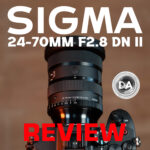


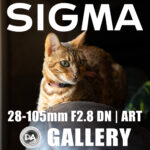
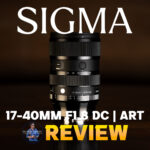
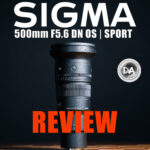
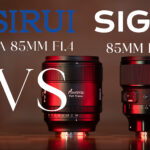
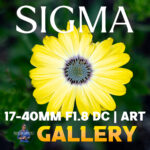

[…] of the flexibility of having a zoom range AND a fast maximum aperture. Last year Sigma launched the 28-45mm F1.8 DG DN | ART lens, a lens I gave a fairly glowing review to because I felt it captured some of that “specialness” that is rare. That was a full frame […]
[…] of the flexibility of having a zoom range AND a fast maximum aperture. Last year Sigma launched the 28-45mm F1.8 DG DN | ART lens, a lens I gave a fairly glowing review to because I felt it captured some of that “specialness” that is rare. That was a full frame […]